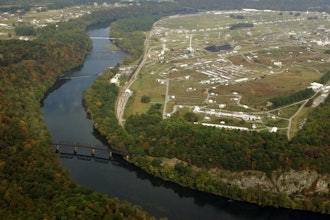
How many robots does it take to make a cup of coffee? Think about it. Before your name is incorrectly scribbled onto a cup, consider the processes, warehousing, transport and logistics needed to get those green beans to your barista. Supply chains can be complex, but robotics help streamline these otherwise complicated networks. That being said, as demand for fast deliveries continues to grow and a need to react quickly to trends becomes more prevalent, how can robotics help suppliers keep up?
Robots have a long history of keeping the supply chain moving. In fact, one of the world’s first industrial robots was created for the sole purpose of transferring objects from one place to another. Today, most tasks that are vital to the supply chain, like the movement of products through a warehouse, rely on robots as standard.
Consider Automated Guided Vehicles (AGVs) as an example. These portable robots use markers, magnets and vision systems to navigate a warehouse floor. The machines can move faster than a human worker, transporting goods from one place to another without the need for any intervention. What’s more, they are not restricted to the weight limits that a human worker could be capable of lifting.
Transporting goods from one place to another might be a simple task, but ultimately, it is better automated. The AGV market reflects this notion. According to a Global Automated Guided Vehicles Market report, the market is expected to reach $24.61 billion by 2020, which represents a growth of 12 percent in the five preceding years.
Robotics have proven to be a vital part of supply chain automation. But, looking to the future, this technology will find a broader range of supply chain applications — beyond the basic transfer of objects.
Next generation robotics
According to a study published by the Information Services Group (ISG), 72 percent of enterprises will increase their investments in robotic process automation by 2019. The surge in investment is likely to be prompted by the success of other companies that have invested heavily in the technology.
For example, Amazon has made no attempt to hide its ambitious goals. Since its major investment in robots in fulfilment centers, the company boasts a 50 percent increase in capacity, compared to a facility without robotics.
Amazon’s robots were supplied by a company that Amazon acquired, Kiva Systems. The robots automate picking and packing processes in large warehouses.
Supply chains and robots form a natural relationship, automating essential, but often monotonous, tasks. However, new generations of robots are changing the role of this technology in the supply chain.
No longer are robots limited to basic applications in warehousing and fulfilment, but for more advanced supply chain operations. Robots may have always transported coffee beans in the fulfilment center. In the future, prepare to see your coffee ground, packaged, delivered and brewed by robots too. Maybe this time, they will spell your name right.
Jonathan Wilkins is marketing director at EU Automation.






















